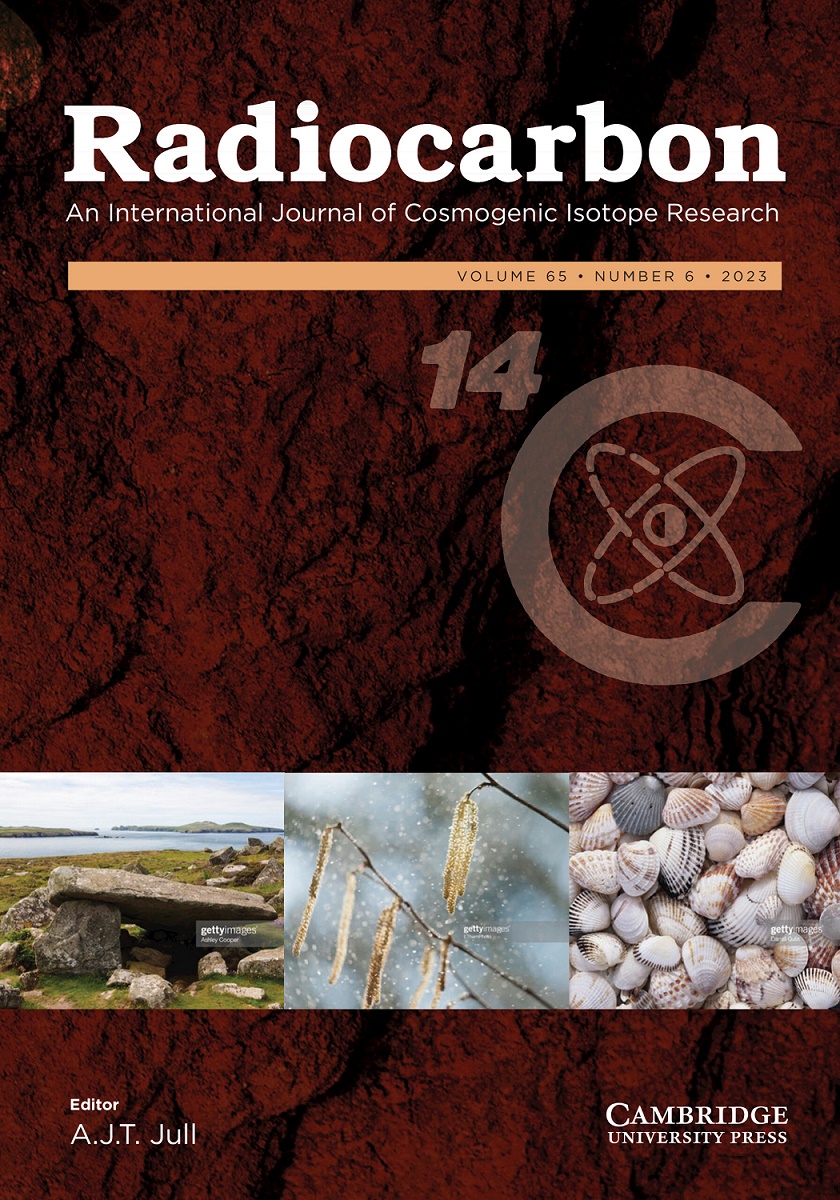PROGRESS TOWARDS A BYZANTINE-MEDIEVAL HISTORIC BUILDINGS TREE-RING CHRONOLOGY FROM CYPRUS USING DENDROCHRONOLOGY AND RADIOCARBON
IF 1.3
3区 地球科学
Q2 GEOCHEMISTRY & GEOPHYSICS
引用次数: 0
Abstract
ABSTRACT The rich architectural heritage of Cyprus from the period of Byzantine and Latin rule includes 10 churches inscribed in the UNESCO World Heritage list. Most of these monuments preserve wooden elements: whether structural, decorative or furnishings. Many preserve wall paintings that are considered among the best examples of Byzantine and Medieval art in the Eastern Mediterranean. The dating of these paintings as well as the church buildings themselves, has been based mainly on style, with occasional dedicatory inscriptions and related historical interpretation. We report early results from a project investigating the wooden cultural heritage of Cyprus and in particular the combined use of dendrochronology with radiocarbon via tree-ring sequenced 14 C wiggle-matching to help place initial tree-ring sequences. This includes a floating 264-year Pinus brutia chronology from several monuments, which, with a ca. 5-year gap, suggests prospects for >700-years of P. brutia chronology for Cyprus, and, with one gap of several decades to fill, ca. 1100 years of Pinus nigra chronology for Cyprus. Several currently floating elements from the multi-phase UNESCO-listed Timios Stravros church at Pelendri, including a terminus post quem for the celebrated liturgical wooden cross, are approximately dated across the 11th to 16th centuries AD.使用树木年代学和放射性碳测定塞浦路斯拜占庭-中世纪历史建筑年轮年表的进展
塞浦路斯丰富的拜占庭和拉丁统治时期的建筑遗产包括10座被联合国教科文组织列入世界遗产名录的教堂。这些纪念碑大多保留了木制元素:无论是结构、装饰还是陈设。许多壁画被认为是东地中海拜占庭和中世纪艺术的最佳典范。这些绘画以及教堂建筑本身的年代主要基于风格,偶尔会有题词和相关的历史解释。我们报告了一个调查塞浦路斯木制文化遗产的项目的早期结果,特别是结合使用树木年代学和放射性碳,通过树木年轮测序14c摆动匹配来帮助确定最初的树木年轮序列。这包括来自几个纪念碑的264年的黑松年表,其中大约有5年的差距,表明塞浦路斯的黑松年表的前景为700年,而塞浦路斯的黑松年表的前景为1100年,其中有一个几十年的空白要填补。Pelendri的Timios Stravros教堂被列入联合国教科文组织名录,目前有几个漂浮的元素,包括著名的礼拜木十字架的终点站,大约可以追溯到公元11世纪到16世纪。
本文章由计算机程序翻译,如有差异,请以英文原文为准。
求助全文
约1分钟内获得全文
求助全文
来源期刊

Radiocarbon
地学-地球化学与地球物理
CiteScore
16.20
自引率
6.00%
发文量
85
审稿时长
6-12 weeks
期刊介绍:
Radiocarbon serves as the leading international journal for technical and interpretive articles, date lists, and advancements in 14C and other radioisotopes relevant to archaeological, geophysical, oceanographic, and related dating methods. Established in 1959, it has published numerous seminal works and hosts the triennial International Radiocarbon Conference proceedings. The journal also features occasional special issues. Submissions encompass regular articles such as research reports, technical descriptions, and date lists, along with comments, letters to the editor, book reviews, and laboratory lists.
 求助内容:
求助内容: 应助结果提醒方式:
应助结果提醒方式:


